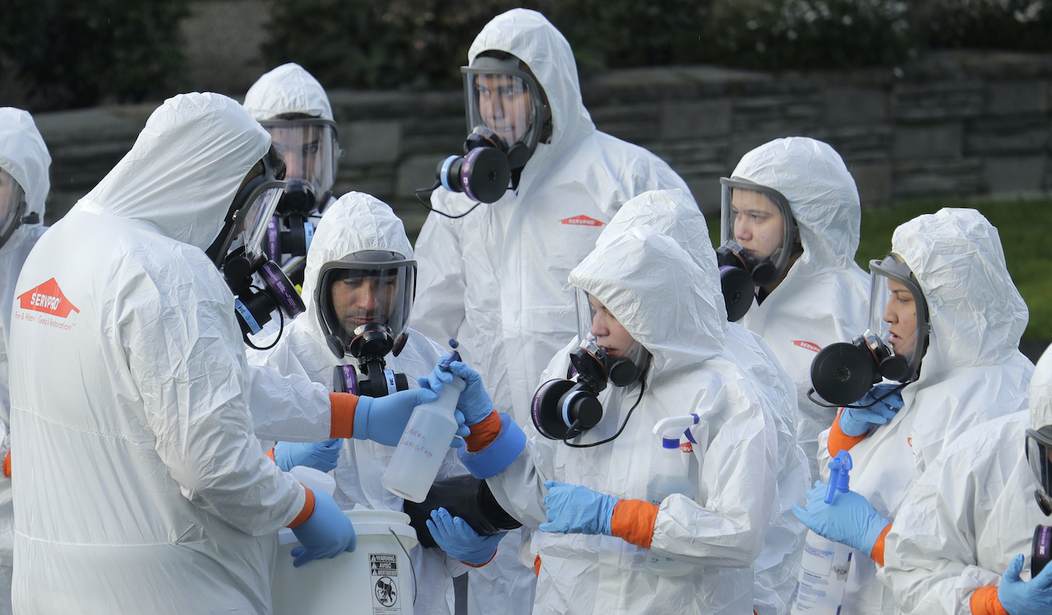Update below.
Sweden took a huge gamble by refusing to initiate a nationwide lockdown when the coronavirus hit. Currently, the Swedes have a death rate of twice the U.S. from the virus. And, as Donald Trump pointed out, they’re doing very poorly compared to their Scandanavian neighbors.
Despite reports to the contrary, Sweden is paying heavily for its decision not to lockdown. As of today, 2462 people have died there, a much higher number than the neighboring countries of Norway (207), Finland (206) or Denmark (443). The United States made the correct decision!
— Donald J. Trump (@realDonaldTrump) April 30, 2020
Sweden’s rationale for not having a nationwide lockdown is novel and innovative. And it probably condemned hundreds to their deaths.
Sweden’s radical response to the outbreak is said to be part of the country’s strategy to establish herd immunity by increasing the number of people exposed to the virus in a bid to prevent another wave of cases.
“At least 50 percent of our death toll is within elderly homes and we have a hard time understanding how a lockdown would stop the introduction of disease,” Anders Tegnell, the chief state epidemiologist at Sweden’s public health agency, told the BBC’s Radio Four’s Today program last week.
The decision to not issue a lockdown “worked in some aspects because our health system has been able to cope,” he noted.
Those elderly people have to get the virus from someone. And that means someone was infected by someone else and passed it along. The more people you are exposed to who have the virus, the better your chances of getting sick.
Your risk is reduced if you don’t encounter anyone with the virus. And the fewer people you meet who are infected, the better your chances. It’s a simple calculation with the obvious drawback of the economic ruin that ensues from keeping people apart.
Tegnell also claimed last week that up to 20 percent of residents in the Swedish capital, Stockholm, have been infected with the virus, noting “We believe that we have an immunity level, if I remember rightly, somewhere between 15-20 percent of the population in Stockholm,” he told CNBC.
“This is not complete herd immunity but it will definitely affect the reproduction rate and slow down the spread (of a second wave),” he said.
Sweden is playing the long game, hoping they infect up to 70 percent of the population so that the next outbreak won’t be near as severe as this one.
Sweden has introduced social distancing rules but, aside from canceling major events where crowds are expected, life goes on as usual. Restaurants are open (with social distancing) while gatherings of 50 or more people are banned.
There is no universal agreement with these policies.
Soderberg-Naucler is among the nearly 2,300 academics who last month signed an open letter to the government urging it to introduce stronger measures to protect the country’s health care system.
“My concern is things [the outbreak] are going too fast,” Soderberg-Naucler said to Radio Sweden last week, noting that the country was too slow to react when the virus was first brought to the country by residents who traveled to higher risk areas, including to the Italian Alps and Iran.
Sweden’s low population density helps in slowing the spread of the coronavirus, but things are still dicey in Stockholm where the infection rate has yet to plateau. That means that the death rate will continue to rise, making it unclear if Sweden’s gamble paid off or not.
Updated May 2, 2020, 9:00 p.m.:
The original headline of this article was in error. Sweden’s death rate is not twice that of the U.S. But it is much higher in percentage of cases that end in death (12.3 to 5.9 for the U.S.) and in deaths per 100,000 population (26.05 to 19.85 in the U.S.) Sweden’s fatalities also far outstrip its Scandinavian neighbors.
Editor’s Note: Want to support PJ Media so we can keep telling the truth about China and the virus they unleashed on the world? Join PJ Media VIP and use the promo code WUHAN to get 25% off your VIP membership.










Join the conversation as a VIP Member